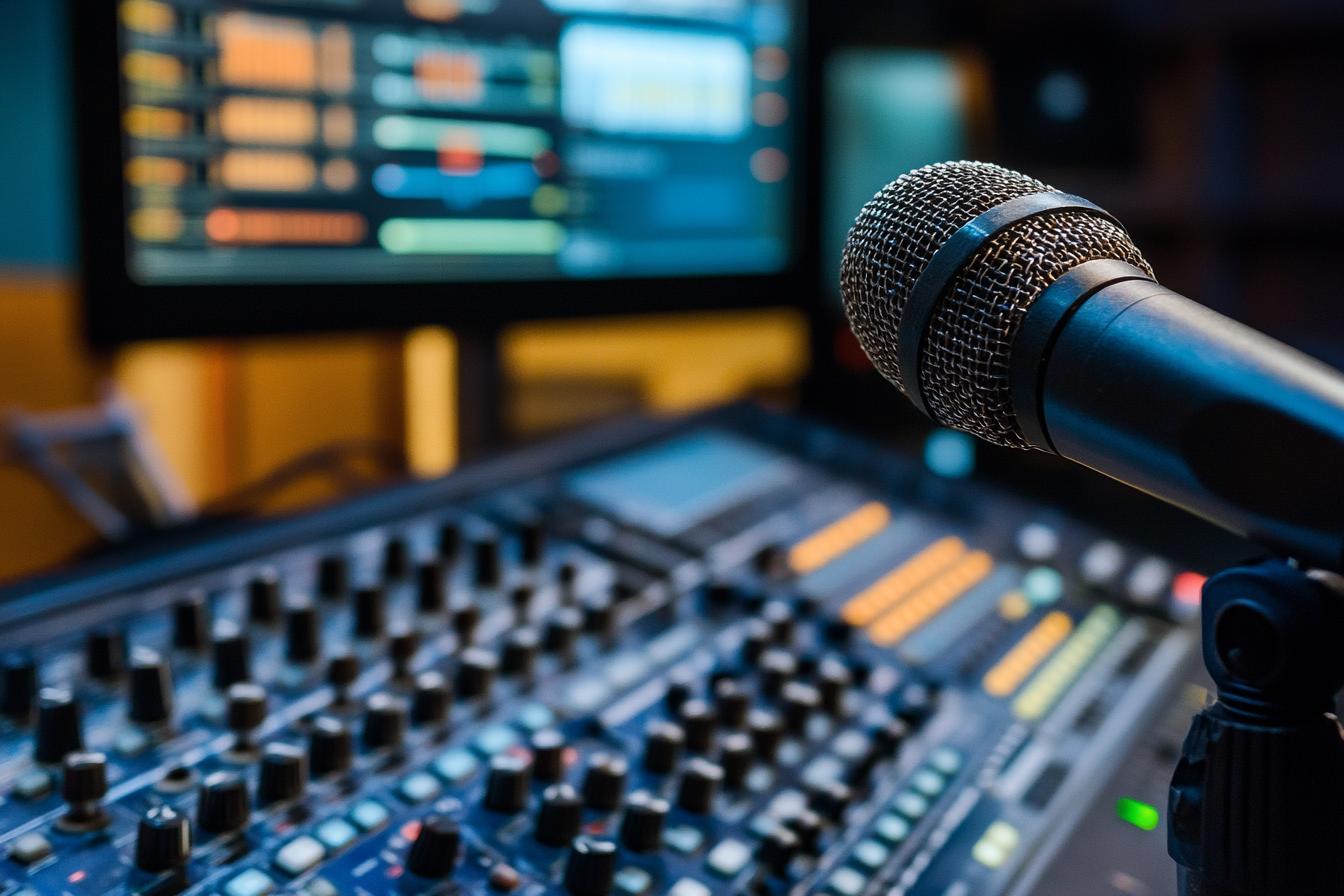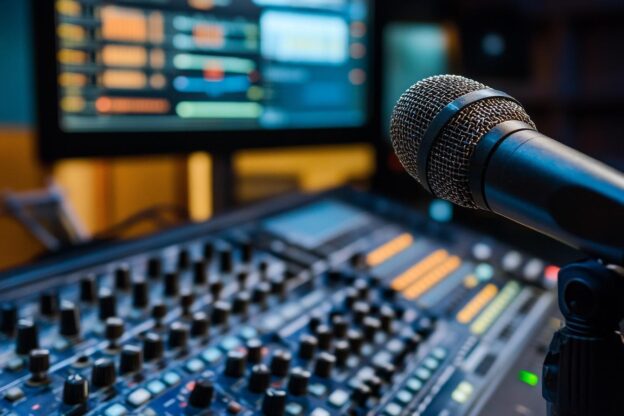Radio news directing is the crucial role of guiding a news program’s production, ensuring a smooth and engaging broadcast for listeners. The director sets the pace, manages the flow of information, and guides the on-air talent, making sure the story unfolds in a clear and compelling manner. This involves coordinating with reporters, producers, and engineers, ensuring all elements are in place for a seamless broadcast. The director is responsible for maintaining the program’s timeline, ensuring that stories are delivered within allotted timeframes and that the program progresses with a natural flow. They must also be acutely aware of the news cycle, understanding the importance of urgency and the need to prioritize breaking news.
Think of a radio news director as the conductor of an orchestra, ensuring each instrument plays its part in creating a harmonious whole. They must be able to anticipate potential issues, make quick decisions under pressure, and adapt to changing circumstances. A skilled director can make the difference between a dull and predictable news broadcast and a dynamic, engaging program that captivates listeners and keeps them informed. They bring a sense of urgency, drama, and clarity to the news, making it a vital element in the production process.

Radio News Directing
1. Radio News Directing
Radio news directing is the art of guiding a news program from script to air. It’s a fast-paced and demanding job that requires a keen understanding of news content, a strong sense of timing, and the ability to keep a cool head under pressure. The director works closely with the news anchor, reporters, producers, and engineers to ensure a smooth and engaging broadcast. They are responsible for cueing up sound bites, managing the flow of the program, and making sure everything runs on time.
Radio news directors use a variety of tools to achieve their goals. They rely on scripts, cue sheets, and audio mixing boards to orchestrate the newscast. They also work with the technical crew to ensure that the audio quality is top-notch. The director’s role is crucial in creating a compelling and informative news experience for listeners. They make sure the news is delivered in a clear, concise, and engaging way, keeping audiences informed and entertained.
2. Guiding News Production
Guiding news production involves directing the flow of information and ensuring a smooth, efficient process. The director sets the tone and pace of the broadcast, working closely with reporters, producers, and engineers to create a compelling and informative news program. This includes assigning stories, managing deadlines, and ensuring the technical aspects of the broadcast run smoothly. The director also plays a crucial role in shaping the narrative, guiding reporters to explore different angles and ensuring the story is presented in a clear and concise manner.
Furthermore, the director actively monitors the news cycle and adapts the program accordingly. They anticipate potential breaking news events and make necessary adjustments to the schedule. The director also oversees the overall quality of the broadcast, ensuring accuracy, objectivity, and adherence to journalistic standards. This multifaceted role requires a blend of leadership, communication, and technical expertise, all of which contribute to the creation of a high-quality news program.
3. Voice sound and pacing
Imagine listening to a news story. The voice you hear, its tone, and the speed at which it’s delivered can significantly impact how you receive the information. A strong voice is clear, confident, and engaging. It conveys the right emotions for the story, whether it’s a serious report or a lighter piece. A soothing voice can make a complex topic easier to understand, while a lively voice can draw you in and keep you interested.
Pacing, or the speed at which the news is delivered, is just as crucial. A fast pace might create a sense of urgency, perfect for breaking news. A slower pace, on the other hand, allows for more detail and reflection, ideal for in-depth analysis. The right pacing helps you absorb the information and understand the story’s significance. So, the next time you hear a news story, pay attention to the voice and how fast it’s delivered. You’ll be surprised at how much these factors influence your understanding and enjoyment.
4. Storytelling through audio
Radio news directing relies heavily on storytelling through audio. You don’t have visuals to help you, so you need to paint a picture in the listener’s mind with words and sound. This involves choosing the right voice talent, crafting engaging scripts, and incorporating sound effects and music. The goal is to create an immersive experience that draws the listener in and keeps them engaged. Think about how you can use sound to evoke emotion, build suspense, and transport your audience to a different place and time.
One of the key elements of storytelling through audio is pacing. You need to move the story along at a natural pace, while also giving listeners time to process information and absorb the details. This involves varying the speed and rhythm of the narration, as well as the use of pauses and silence. Remember, you’re not just reading a script, you’re telling a story, and that requires a certain level of artistry and skill.
5. Technical aspects of broadcasting
Radio news directing involves understanding the technical aspects of broadcasting. The audio quality of a news report is paramount, so producers and directors need to be familiar with microphones, audio mixers, and recording software. They must ensure that sound levels are appropriate and that the audio is clear and free of distortion. Additionally, directors should be aware of the different types of audio formats and how to edit and manipulate audio to create a compelling news report.
Beyond audio, directors must also consider the technical aspects of scheduling and transmitting a news program. This includes understanding the different types of radio transmitters and the frequencies they use. Directors must also work closely with engineers to ensure that the program is broadcast at the correct time and that the signal reaches the intended audience. Furthermore, they need to be aware of the limitations of the broadcast equipment and how these limitations might affect the production of the news program.
6. Collaboration with Reporters
Building a strong relationship with reporters is essential for any radio news director. It’s not just about getting your stories on the air; it’s about fostering a collaborative environment where reporters feel valued, supported, and encouraged to bring their best work to the table. This means actively listening to their ideas, providing constructive feedback, and offering guidance when needed. A good news director will also make sure reporters have the resources they need to succeed, such as access to training, equipment, and contacts.
Collaboration with reporters extends beyond the newsroom. News directors should actively engage with reporters in the field, attending events and meetings, and staying informed about the issues that are important to their community. This allows for a deeper understanding of the stories reporters are pursuing and enables news directors to provide valuable insights and context. Ultimately, a strong partnership between news directors and reporters results in high-quality journalism that informs and engages listeners.
Conclusions
So, there you have it! Radio news is a fascinating world where words paint pictures in your mind. From directing the news flow to guiding reporters, radio news professionals wear many hats. They make sure stories come alive through the right voices, pacing, and sound effects. And, of course, they’re the ones who keep the technical side of broadcasting running smoothly. It’s all about collaboration, creativity, and a passion for sharing information in a way that connects with listeners. Whether you’re a news junkie or just curious about the magic behind the microphone, remember that radio news is more than just a broadcast – it’s a connection.
